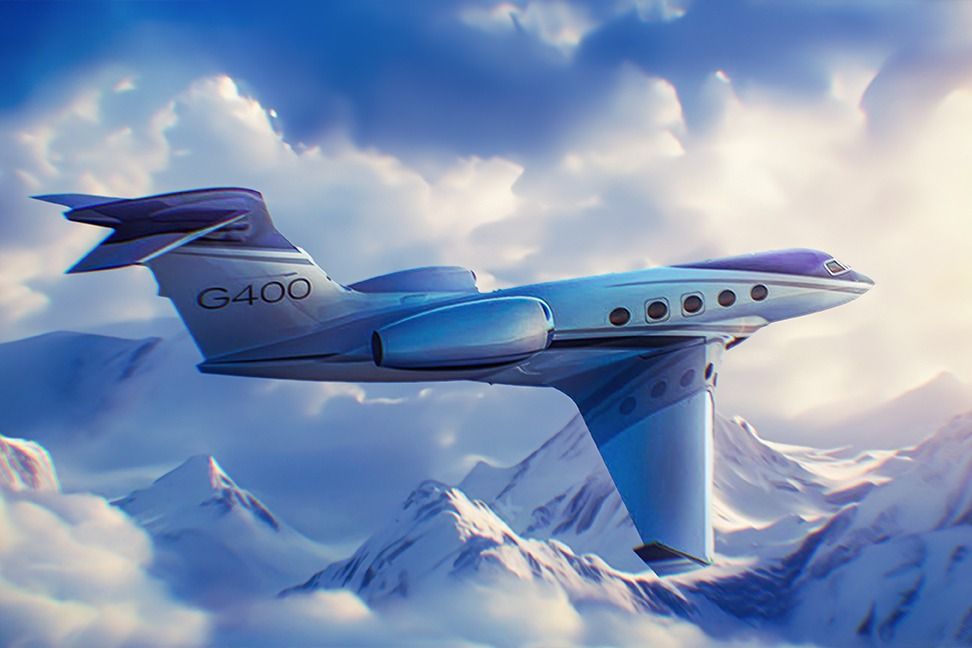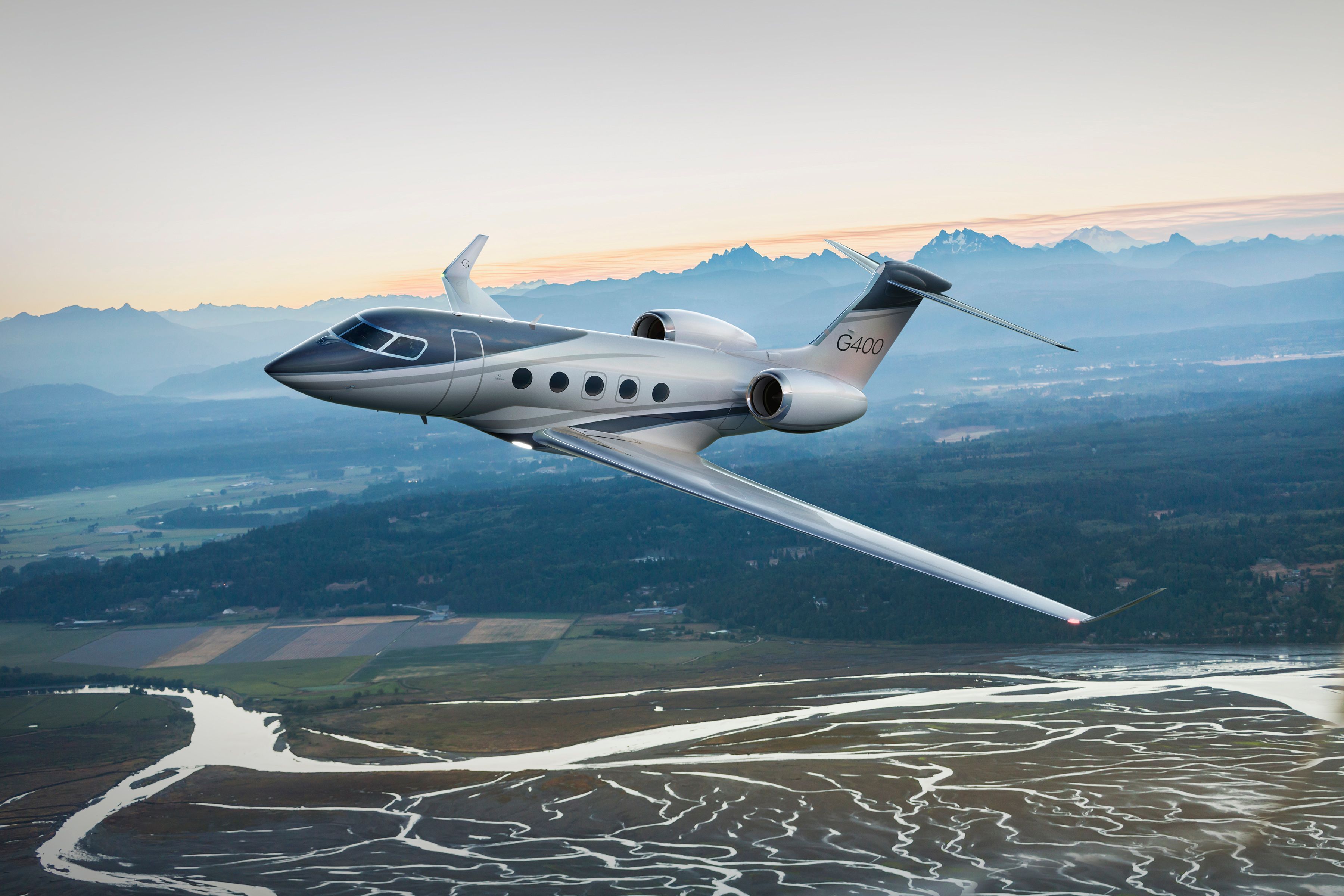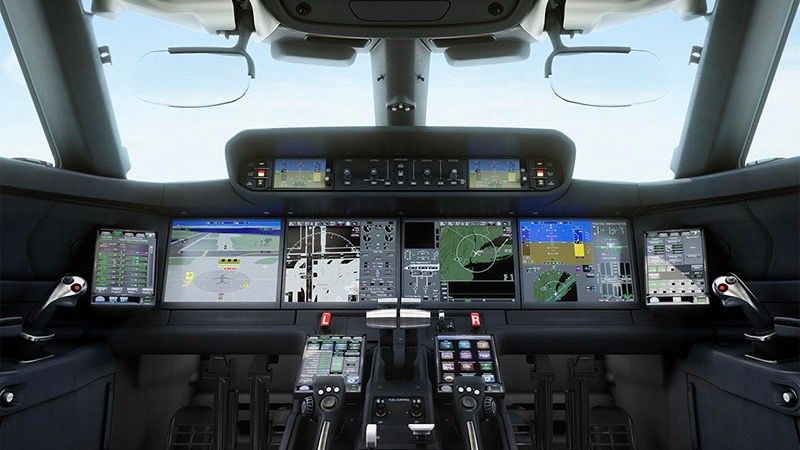Summary
- The new Gulfstream G400 features Pratt & Whitney Canada engines, shortened cabin length, and a high maximum operating speed of Mach 0.90.
- The G400 will be controlled by BAE Systems active sidesticks and will utilize the Honeywell Symmetry Flight Deck avionics system for a seamless transition for pilots.
Gulfstream Aerospace is well-known globally for its approach to developing and manufacturing state-of-the-art business jets. Originally, the company was founded in 1958 and is currently based in Savannah, Georgia. The company was founded as a part of Grumman Aircraft Engineering, which typically developed military aircraft. However, in the early 1950s, Grumman Aircraft Engineering designed a business aircraft. This turboprop aircraft was called the Grumman Gulfstream and was designated as the G-1. As the program commenced, to improve engineering efficiency, Grumman officially separated the program into its own company, which was later called Gulfstream Aerospace.

In Development: A Guide On What To Expect With The Gulfstream G400
Gulfstream hopes to enter the G400 into production next year.
Since then, Gulfstream has gone on to develop some of the world’s most notable business jets. This includes the recently certified Gulfstream G700, which has the longest range of any business jet worldwide, narrowly beating out the Bombardier Global 7500. Gulfstream is also working to certify another ultra-long-range business jet called the G800, which will surpass the G700’s already long range.
Another one of the company’s soon-to-be-certified aircraft is the Gulfstream G400. This smaller variant of the successful G500 and G600 is currently under development by the Georgia-based manufacturer. Let’s take a closer look at some of the features the Gulfstream G400 is expected to have.
1 New Pratt & Whitney engines
The Gulfstream G400 will utilize two Pratt & Whitney Canada PW812GA turbofan engines.
Gulfstream has stated that the G400 will utilize a set of new Pratt & Whitney Canada PW812GA turbofan engines. Transport Canada officially certified this engine in September 2022, allowing it to be installed on the aircraft. The addition of brand-new engines has complicated the certification process for the G400, however. After the Federal Aviation Administration (FAA) strengthened certification requirements after the Boeing 737 MAX groundings, Gulfstream began anticipating a more extensive certification campaign for the G400 aircraft. This also represents a lengthier flight-test process for the five prototype G400 aircraft that are in development.
Photo: Gulfstream
These engines will provide nearly 14,000 pounds of force in maximum thrust. After the engine was certified in 2022, Maria Della Posta, President of Pratt & Whitney Canada, spoke about the success, stating,
“When it enters into service (EIS), the G400 will be the third Gulfstream aircraft to rely on our PW800 engine family. We are gratified by the steady progress the PW800 engine family has achieved based on its ability to deliver a new level of performance and efficiency to the large cabin business aircraft class.”
2 Shortened cabin length
The G400’s cabin is expected to stretch 86.3 feet.
The Gulfstream G400 will have the second-shortest cabin length in the currently produced Gulfstream fleet, behind only the Gulfstream G280, which has a cabin length of 66.9 feet. The G400 will share the same fuselage cross-section as the previously certified G500 and G600.
The G400 will have the following interior cabin dimensions:
- Cabin length: 36 feet four inches
- Cabin width: seven feet seven inches
- Cabin height: six feet two inches
The G400 will be built to fit two and a half interior zones. This means the aircraft can fit up to 12 passengers and can sleep up to five passengers, depending on the configuration.
3 High maximum operating speed
The aircraft can reach a maximum operating speed of Mach 0.90 (594 miles per hour).
As previously mentioned, the G400 will be powered by two brand-new Pratt & Whitney Canada engines. Combined with the shorter fuselage length, meaning it has a lighter overall weight, the G400 is projected to reach high cruise speeds and maximum operating speeds but still requires a relatively short takeoff distance.
The Gulfstream G400 will have the following performance specifications:
|
Maximum takeoff weight (MTOW) |
69,850 pounds |
|---|---|
|
Maximum payload |
4,050 pounds |
|
Fuel capacity |
25,350 pounds |
|
Range |
4,200 nautical miles (4,833 miles) |
|
Cruise speed |
Mach 0.88 (581 miles per hour) |
|
Maximum operating speed |
Mach 0.90 (594 miles per hour) |
|
Takeoff distance |
5,000 feet |
|
Flight ceiling |
51,000 feet |
4 Controlled by sidesticks
The aircraft utilizes BAE Systems active sidesticks, similar to the G500 and the G600.
Many of the newer Gulfstream aircraft utilize BAE Systems active control sidesticks (ACS) instead of the standard control yoke many business jets use. The sidesticks are located on either side of the pilot instead of directly in front of the pilot, like a steering wheel. The G500, G600, G700, and the future G800 will all utilize sidesticks within their cockpits.
Photo: Gulfstream Aerospace
This way of controlling the aircraft pairs specifically well with business jets that operate with fly-by-wire flight controls. The sidesticks assist the pilot by giving real-time feedback into the pilot’s hand. This feedback is given in the form of various cues and can be as simple as the sidestick becoming harder to push in a direction as the aircraft reaches its maximum limit. This feedback is called tactile cueing.
5 Honeywell Symmetry Flight Deck
This avionics system is focused on four main displays, with additional displays on the overhead panel and the glare shield.
Gulfstream also utilizes the Honeywell Symmetry Flight Deck across several of its aircraft, including the popular G500 and G600, meaning that pilots can easily transition between the family of aircraft.
The Honeywell Symmetry Flight Deck is based on four main displays that are set in a portrait configuration. The system also uses three overhead touchscreens instead of the array of various switches and buttons like older aircraft. Another four force-touch screens are installed in the glare shield of the aircraft. Finally, each side of the cockpit is equipped with another standby display.






